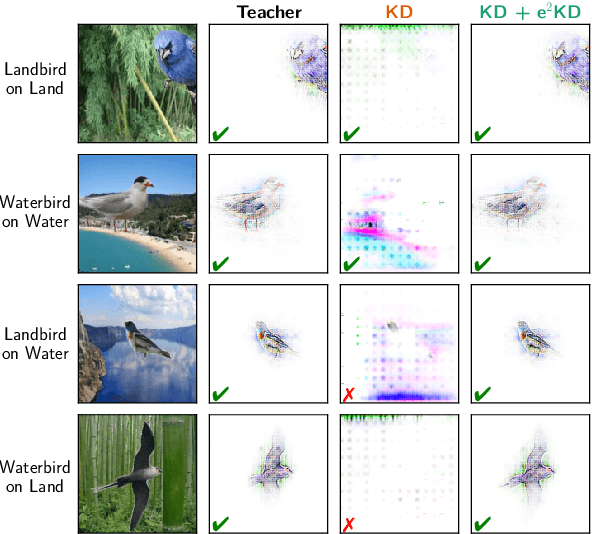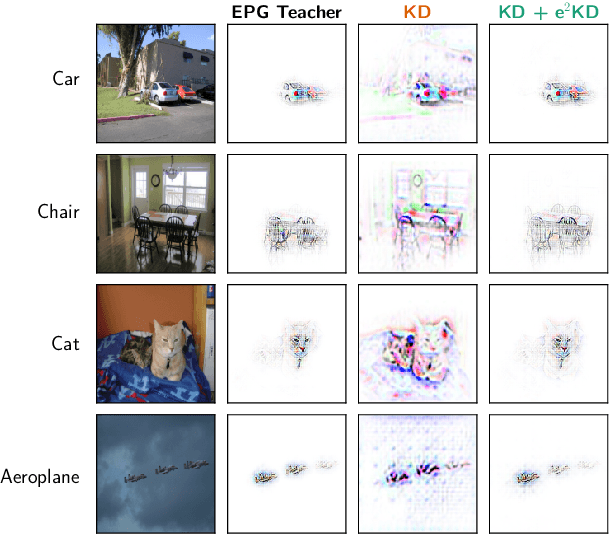Amin Parchami-Araghi
Good Teachers Explain: Explanation-Enhanced Knowledge Distillation
Feb 05, 2024



Abstract:Knowledge Distillation (KD) has proven effective for compressing large teacher models into smaller student models. While it is well known that student models can achieve similar accuracies as the teachers, it has also been shown that they nonetheless often do not learn the same function. It is, however, often highly desirable that the student's and teacher's functions share similar properties such as basing the prediction on the same input features, as this ensures that students learn the 'right features' from the teachers. In this work, we explore whether this can be achieved by not only optimizing the classic KD loss but also the similarity of the explanations generated by the teacher and the student. Despite the idea being simple and intuitive, we find that our proposed 'explanation-enhanced' KD (e$^2$KD) (1) consistently provides large gains in terms of accuracy and student-teacher agreement, (2) ensures that the student learns from the teacher to be right for the right reasons and to give similar explanations, and (3) is robust with respect to the model architectures, the amount of training data, and even works with 'approximate', pre-computed explanations.
Using Explanations to Guide Models
Mar 21, 2023



Abstract:Deep neural networks are highly performant, but might base their decision on spurious or background features that co-occur with certain classes, which can hurt generalization. To mitigate this issue, the usage of 'model guidance' has gained popularity recently: for this, models are guided to be "right for the right reasons" by regularizing the models' explanations to highlight the right features. Experimental validation of these approaches has thus far however been limited to relatively simple and / or synthetic datasets. To gain a better understanding of which model-guiding approaches actually transfer to more challenging real-world datasets, in this work we conduct an in-depth evaluation across various loss functions, attribution methods, models, and 'guidance depths' on the PASCAL VOC 2007 and MS COCO 2014 datasets, and show that model guidance can sometimes even improve model performance. In this context, we further propose a novel energy loss, show its effectiveness in directing the model to focus on object features. We also show that these gains can be achieved even with a small fraction (e.g. 1%) of bounding box annotations, highlighting the cost effectiveness of this approach. Lastly, we show that this approach can also improve generalization under distribution shifts. Code will be made available.
 Add to Chrome
Add to Chrome Add to Firefox
Add to Firefox Add to Edge
Add to Edge